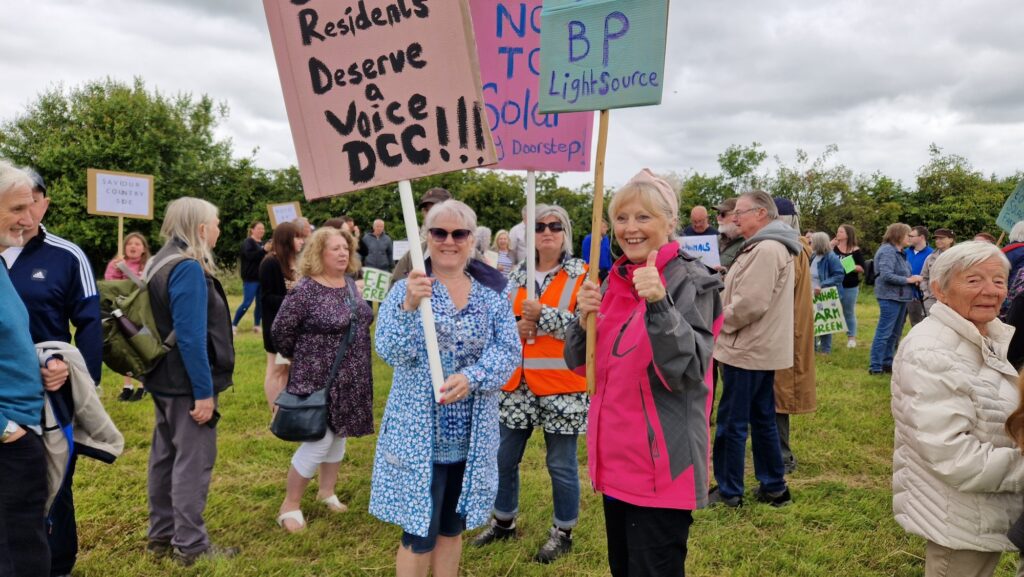
Located within County Durham lies the small rural village of Burnhope. Despite being only seven miles from Durham city, it’s like going back in time; four roads going in and out, no pavements, some shops, a post office and… a vibrant community centre.
What it does have, is an abundance of nature and wildlife. Beautiful walks and a local nature reserve nearby provide scenic landscapes that attract many of the residents to move to the village in the first place.
But this may all change, as fears loom over the potential impact of BP’s proposed solar farm, spanning 14 surrounding fields.
The proposal to build the 92-hectare site was initially approved by Durham County Council in March 2023, despite residents’ concerns over issues such as the site’s negative effects on wildlife, road disruption and the impact on the mental health of those who would no longer be able to go on walks.
It’s taken two years to get their voices heard, and when the judge quashed Durham County Council’s approval, deeming BP’s plans as ‘unlawful’ due to the excessive size dimensions, there appeared to, at last, be hope for frustrated residents.
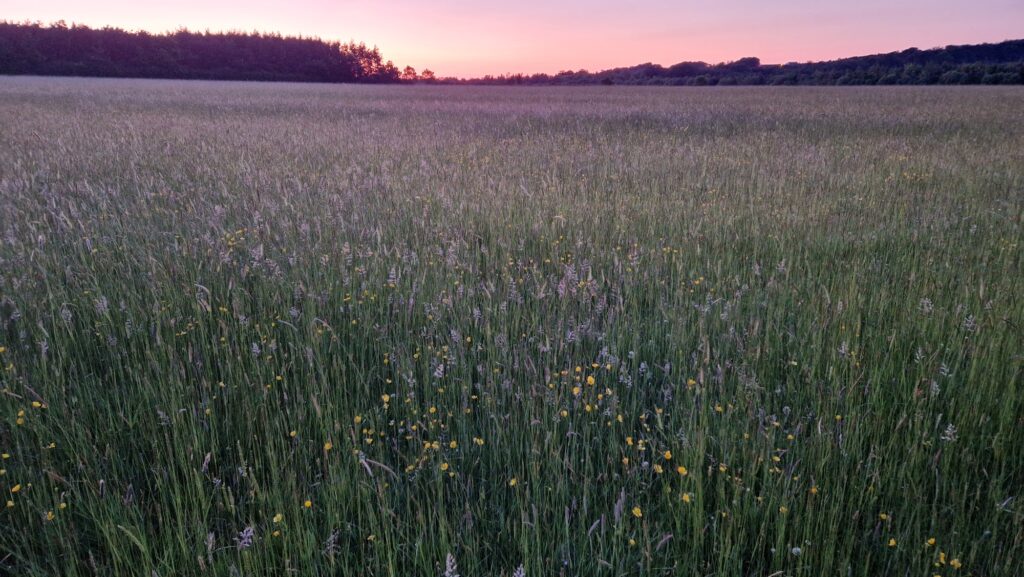
But with another BP application now admitted to include ‘improvements to rights of way and landscaping to minimise visual impacts’, the people of Burnhope have begun protesting again in a fresh attempt to have their concerns taken into account.
At the forefront of the campaign is local resident Ian Galloway, whose anger and determination blazes bright enough to rival the vast expanse of the 215-acre solar panel project.
When asked about the outcome after the court’s ruling he said: “Everyone’s really angry… The High Court recommended they talk to residents and find a compromise to reduce the scale of the site and take a more community point of view. They’ve done no such thing.
- Read more: Delicious way to enjoy the North East
- Read more: Mayors at front and centre of economic growth mission
“It feels like our voice is of no account. Our voice is not being heard. People feel overlooked and ignored and, to be honest, that’s what has happened.”
Nonetheless, Ian remains steadfast in his belief that he and the people of Burnhope will no longer be overlooked, continuing to fight as underdogs against a large corporation and the council.
“Loads of people have said to me there’s no point doing what you’re doing here,” he adds. “You’ll never win. But the way to empower people is to give them a voice. It’s to allow them to be responsible for their own well-being and their own destiny, not just dismiss them.”
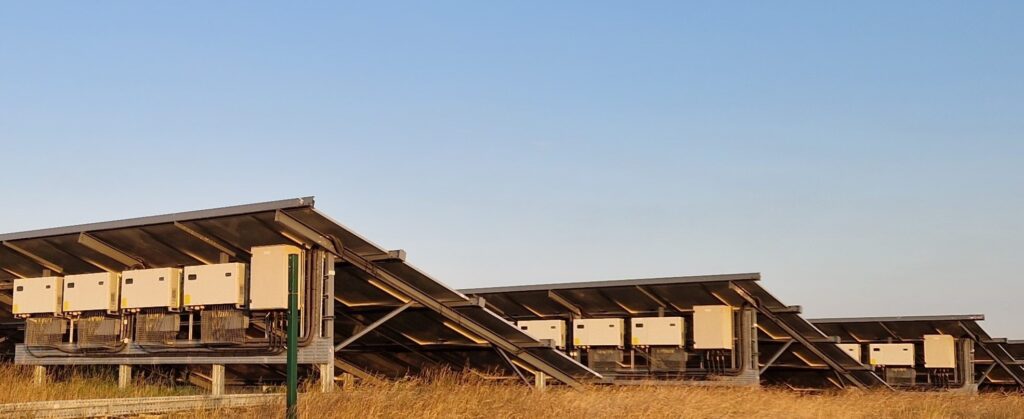
The council said the outcome of the application had not yet been determined. Michael Kelleher, head of planning and housing, said: “We have received updated information in relation to this planning application and it is subject to our standard process, which includes consultation with local residents and other interested parties.
“All responses to the consultation will be carefully considered before the application is determined.”
BP has claimed that the Burnhope site will save 14,341 tonnes of carbon emissions and help power approximately 13,861 homes per year.
At a time where climate change is at the forefront of politics and the news, the question lingers: will the solar panel farm not have a positive impact on the planet?
Ian argues the situation may not be so simplistic, questioning whether the solar panels alone could sufficiently meet Burnhope’s housing and electricity demands.
“I used to think that solar panels were positive, but the thing is… they produce nothing in the dark and produce very little from about the middle of October to the middle of February. So we’re going to have to have another system. That means that solar can only be a supplement. It can’t be the main answer.
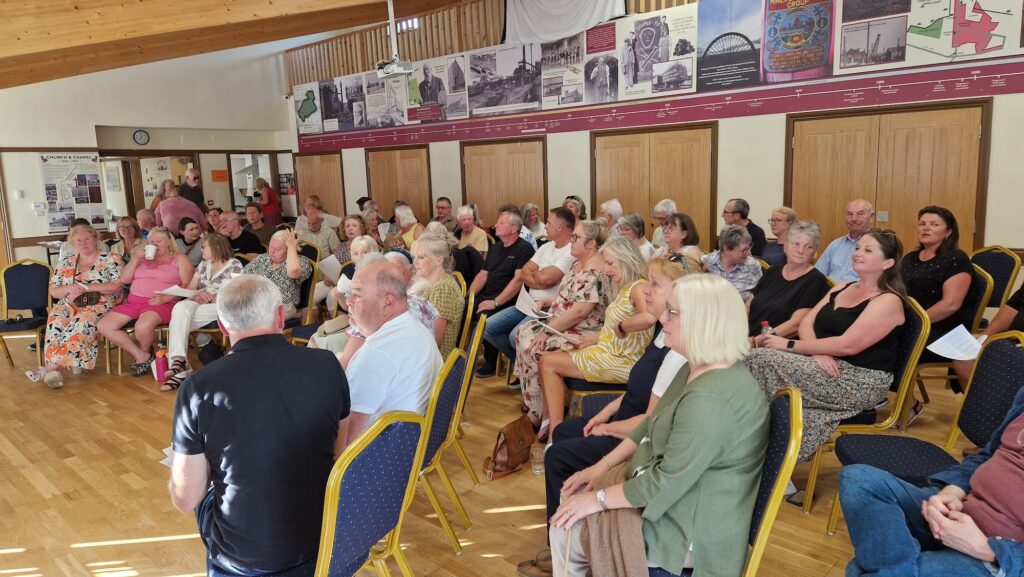
“So why incur? Why destroy such vast areas of farming? Why compromise food, security, beauty and nature for such a small gain. We’re trying to save the environment, not destroy it.”
He said a single wind turbine can generate more power over the year than 220 acres of solar panels combined, underscoring many residents’ worries about the site’s overall value and impact.
There were also links made to the history of Burnhope — fears of the impact of industrialisation is something that is rooted to the village’s past.
- Read more: Schools need more help to support pupils’ mental health
- Read more: Alnwick Castle to showcase homegrown fashion
As an ex-mining village, the shut down of coal mines in 1941 has not been forgotten, with Burnhope’s legacy as a ‘category D’ village. What that means is that until 1977, Burnhope was considered uneconomical and unsuitable for any investment and developments, with residents expected to leave their homes.
Having endured years of industrialisation, only to face demands to abandon a future for the village, it’s no wonder Burnhope has been dubbed ‘The village that refuses to die’. As today, it continues to boast a thriving local community and a growing population.
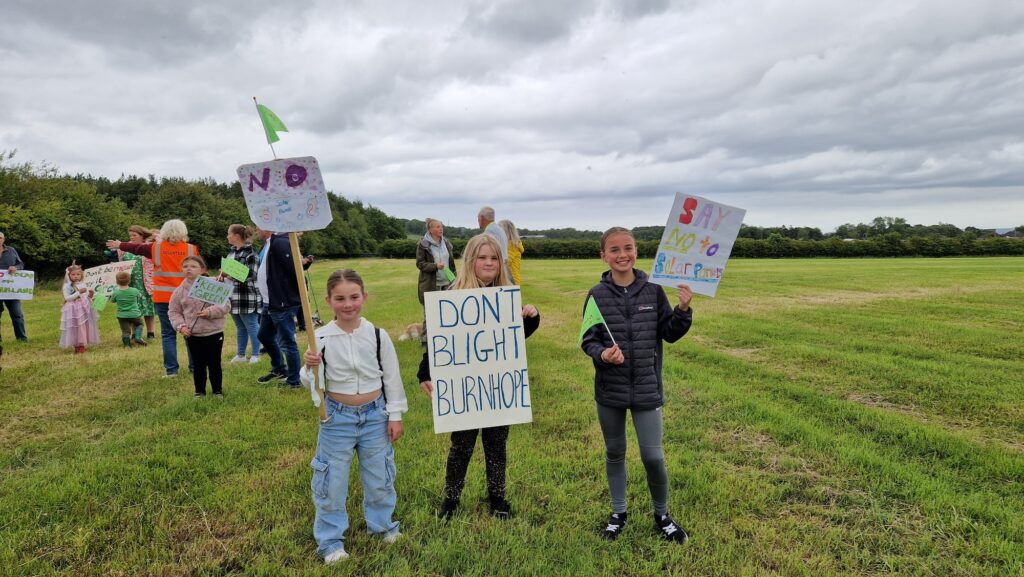
The residents, therefore, despite facing their challenges, remain determined to preserve the legacy of a village they have fought to protect their entire lives. And their willpower now gives new meaning to the village’s name; embodying a burning hope that refuses to be extinguished.
It is believed the challenge issued to the High Court was a procedural one, rather than concerning the merits of the project itself. The High Court judgment instructed Lightsource BP to return to the planning officer and committee to provide further information on the land use and capacity of the proposals, which The QT understands they have done.
The local planning authority has subsequently undertaken consultation on the additional information submitted, and representations have been received from neighbouring residents and the community.
The QT understands there was no instruction to reconsult with the local community, who were consulted during the initial planning application, which led to changes to the layout of the proposed project.











